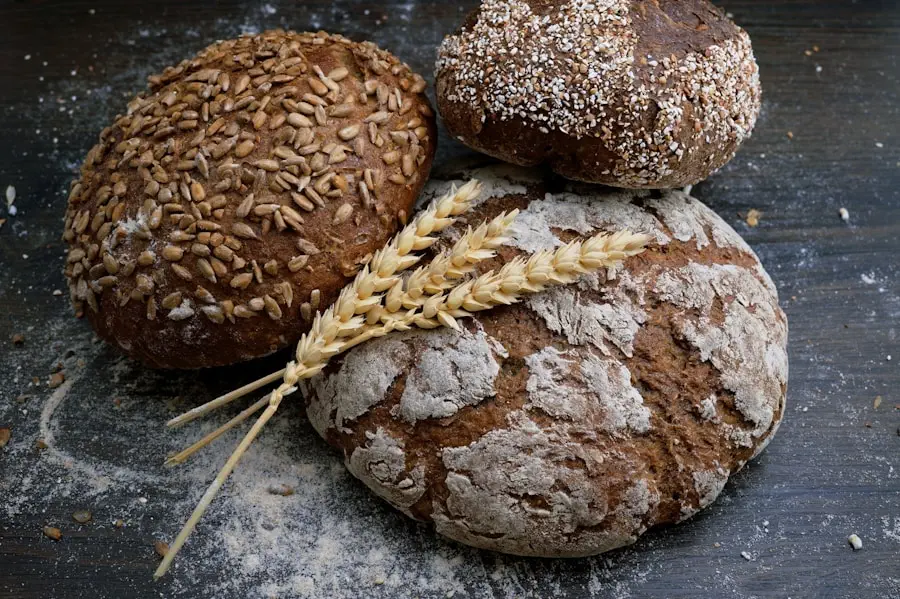Gout is a form of arthritis that occurs when uric acid builds up in the body and forms crystals in the joints, leading to inflammation and intense pain. This condition primarily affects the joints in the big toe, but it can also occur in other joints such as the ankles, knees, elbows, wrists, and fingers. The inflammation caused by gout can be extremely painful and debilitating, making it difficult for individuals to perform everyday activities. In addition to joint pain, gout can also cause swelling, redness, and warmth in the affected joints.
Inflammation is the body’s natural response to injury or infection, but in the case of gout, it is triggered by the presence of uric acid crystals in the joints. When the immune system detects these crystals, it releases inflammatory chemicals that cause pain and swelling. Inflammation is a key component of gout and managing it is essential for reducing pain and preventing long-term joint damage. By understanding the role of inflammation in gout, individuals can make informed decisions about their diet and lifestyle to help manage their symptoms and improve their overall quality of life.
The Role of Whole Grains in Managing Gout
Whole grains are an important component of a gout-friendly diet because they are rich in fiber, vitamins, minerals, and antioxidants that can help reduce inflammation in the body. Inflammation is a key factor in gout pain, so incorporating whole grains into your diet can help manage symptoms and improve overall joint health. Whole grains such as brown rice, quinoa, barley, oats, and whole wheat are excellent sources of fiber, which can help lower levels of uric acid in the blood and reduce inflammation in the body. Additionally, whole grains contain important nutrients such as magnesium, which has been shown to have anti-inflammatory effects and may help reduce the risk of gout attacks.
In addition to their anti-inflammatory properties, whole grains are also low in purines, which are compounds that break down into uric acid in the body. High levels of purines can increase the risk of gout attacks, so choosing whole grains over refined grains can help lower uric acid levels and reduce the frequency and severity of gout symptoms. By incorporating whole grains into your diet, you can help manage inflammation and reduce the risk of gout attacks, leading to improved joint health and overall well-being.
Choosing the Right Whole Grains for Gout Relief
When it comes to managing gout with whole grains, it’s important to choose the right types of grains that are low in purines and high in fiber and nutrients. Some of the best whole grains for gout relief include brown rice, quinoa, barley, oats, and whole wheat. These grains are low in purines and high in fiber, which can help lower uric acid levels and reduce inflammation in the body. Additionally, these whole grains are versatile and can be incorporated into a wide variety of dishes, making it easy to add them to your diet on a regular basis.
When choosing whole grains for gout relief, it’s important to opt for whole grain products rather than refined grains. Refined grains have had the bran and germ removed during processing, which strips them of their fiber and nutrient content. This can lead to higher levels of uric acid in the body and increased inflammation, so it’s best to choose whole grain options whenever possible. Look for whole grain breads, pastas, cereals, and flours to ensure you’re getting the maximum health benefits from your grain choices.
Incorporating Whole Grains into Your Diet
Incorporating whole grains into your diet is a simple and effective way to manage gout symptoms and improve overall joint health. There are many easy ways to add whole grains to your meals, whether you’re cooking at home or dining out. Start by swapping out refined grains for whole grain options such as brown rice, quinoa, or whole wheat pasta. You can also experiment with different types of whole grain breads and cereals to find options that you enjoy. Adding whole grains to your diet doesn’t have to be complicated – simply look for opportunities to include them in your meals and snacks on a regular basis.
One easy way to incorporate whole grains into your diet is by starting your day with a nutritious breakfast that includes whole grain options. Try swapping out your usual breakfast cereal for a bowl of oatmeal or whole grain cereal with fresh fruit and nuts. You can also experiment with adding whole grain flours to your baking recipes for pancakes, muffins, and breads. For lunch and dinner, consider using whole grain options such as brown rice or quinoa as a base for your meals. These versatile grains can be used in a wide variety of dishes, from stir-fries and salads to pilafs and casseroles.
Whole Grain Recipes for Gout Relief
There are countless delicious recipes that incorporate whole grains and are perfect for managing gout symptoms. From hearty soups and stews to flavorful salads and side dishes, there are endless possibilities for adding whole grains to your meals. One simple recipe to try is a quinoa salad with fresh vegetables and herbs. Simply cook quinoa according to package instructions and toss it with chopped cucumbers, tomatoes, red onion, parsley, mint, lemon juice, olive oil, salt, and pepper for a refreshing and nutritious dish. Another option is to make a batch of brown rice pilaf with sautéed vegetables and herbs for a satisfying side dish that pairs well with grilled chicken or fish.
For a comforting meal that’s perfect for cooler weather, try making a hearty barley soup with vegetables and lean protein such as chicken or turkey. Simply simmer barley with broth, carrots, celery, onions, garlic, and herbs until tender, then add cooked chicken or turkey for a filling and nutritious meal. You can also experiment with using whole grain pasta in your favorite pasta dishes – simply swap out traditional pasta for whole grain options such as whole wheat or quinoa pasta for added fiber and nutrients.
Other Dietary Tips for Managing Gout Pain and Inflammation
In addition to incorporating whole grains into your diet, there are several other dietary tips that can help manage gout pain and inflammation. It’s important to stay hydrated by drinking plenty of water throughout the day to help flush out uric acid from the body. Limiting alcohol consumption is also important for managing gout symptoms, as alcohol can increase uric acid levels in the body and trigger gout attacks. Additionally, reducing intake of high-purine foods such as red meat, organ meats, shellfish, and sugary beverages can help lower uric acid levels and reduce the frequency of gout attacks.
Maintaining a healthy weight through regular exercise and a balanced diet is also important for managing gout symptoms. Excess weight can increase the risk of gout attacks and worsen joint pain, so focusing on maintaining a healthy weight can help reduce inflammation and improve overall joint health. It’s also important to limit intake of processed foods that are high in sugar, salt, and unhealthy fats, as these can contribute to inflammation in the body. By making smart dietary choices and focusing on whole foods such as fruits, vegetables, lean proteins, dairy products, and whole grains, individuals can effectively manage gout pain and inflammation.
Consulting a Healthcare Professional for Gout Management
While dietary changes can play an important role in managing gout pain and inflammation, it’s essential to consult a healthcare professional for personalized guidance and treatment options. A healthcare professional can provide individualized recommendations based on your specific needs and medical history to help manage gout symptoms effectively. They can also offer guidance on medication options such as nonsteroidal anti-inflammatory drugs (NSAIDs), corticosteroids, or prescription medications that can help reduce inflammation and prevent gout attacks.
In addition to dietary changes and medication options, healthcare professionals can provide guidance on lifestyle changes such as exercise routines, stress management techniques, and other strategies for managing gout symptoms. They can also monitor uric acid levels through blood tests to track progress and make adjustments to treatment plans as needed. By working closely with a healthcare professional, individuals can receive comprehensive care for managing gout pain and inflammation while improving overall joint health and quality of life.
In conclusion, managing gout pain and inflammation through dietary changes is an important aspect of overall treatment for this condition. Whole grains play a key role in managing gout symptoms due to their anti-inflammatory properties and low purine content. By choosing the right whole grains for gout relief and incorporating them into your diet through delicious recipes and meal ideas, individuals can effectively manage their symptoms while improving overall joint health. In addition to dietary changes, it’s important to consult a healthcare professional for personalized guidance on managing gout pain and inflammation through medication options, lifestyle changes, and ongoing monitoring of uric acid levels. With the right approach to managing gout symptoms through dietary changes and medical care, individuals can experience improved quality of life while effectively managing their condition.

